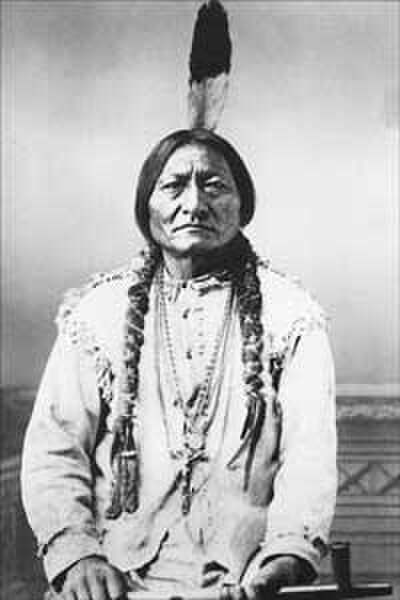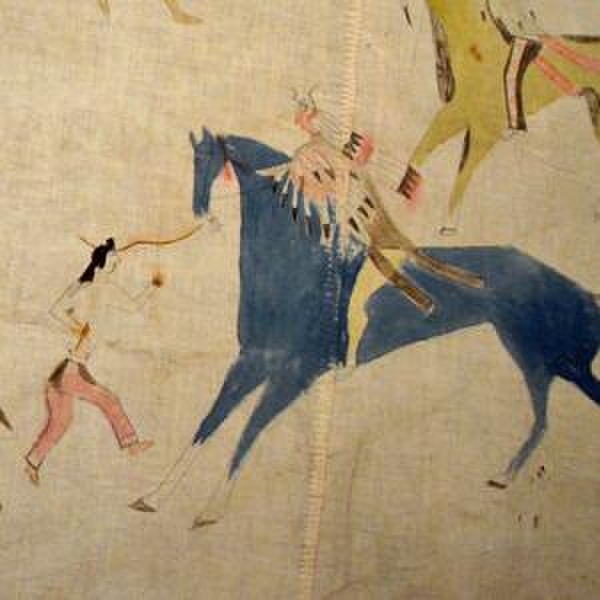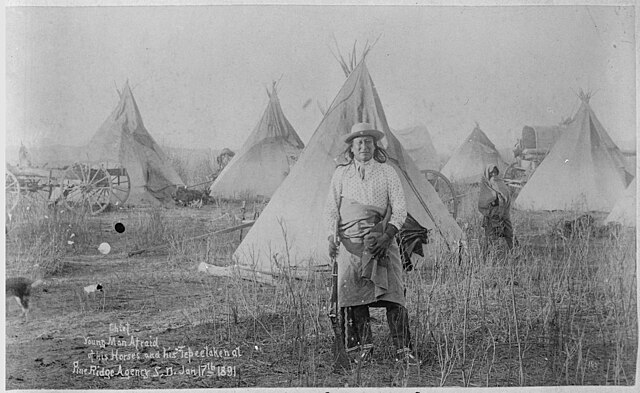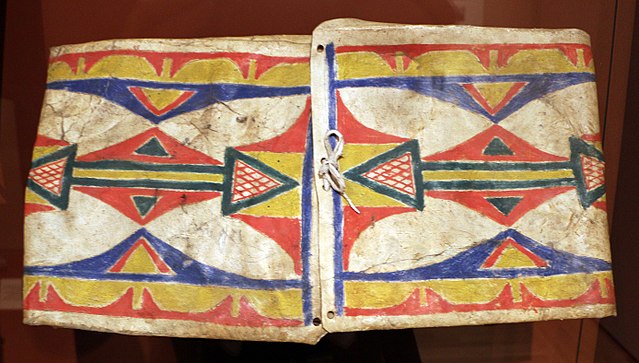Battle of the Little Bighorn
The Battle of the Little Bighorn, known to the Lakota and other Plains Indians as the Battle of the Greasy Grass, and commonly referred to as Custer's Last Stand, was an armed engagement between combined forces of the Lakota Sioux, Northern Cheyenne, and Arapaho tribes and the 7th Cavalry Regiment of the United States Army. The battle, which resulted in the defeat of U.S. forces, was the most significant action of the Great Sioux War of 1876. It took place on June 25–26, 1876, along the Little Bighorn River in the Crow Indian Reservation in southeastern Montana Territory.
The Battle of Little Bighorn by Charles Marion Russell
Gall
A Cheyenne Sun Dance gathering, circa 1909
1876 Army Campaign against the Sioux
The Lakota are a Native American people. Also known as the Teton Sioux, they are one of the three prominent subcultures of the Sioux people, with the Eastern Dakota (Santee) and Western Dakota (Wičhíyena). Their current lands are in North and South Dakota. They speak Lakȟótiyapi—the Lakota language, the westernmost of three closely related languages that belong to the Siouan language family.
Sitting Bull, a Hunkpapa Lakota chief and holy man, c. 1831 – December 15, 1890
Scenes of battle and horse raiding decorate a muslin Lakota tipi from the late 19th or early 20th century
January 17, 1891: Young Man Afraid of His Horses at camp of Oglala band of Lakota at Pine Ridge, South Dakota, 3 weeks after the Wounded Knee Massacre, when 153 Lakota Sioux and 25 U.S. soldiers died
Lakota parfleche, c. 1890, Speed Art Museum








